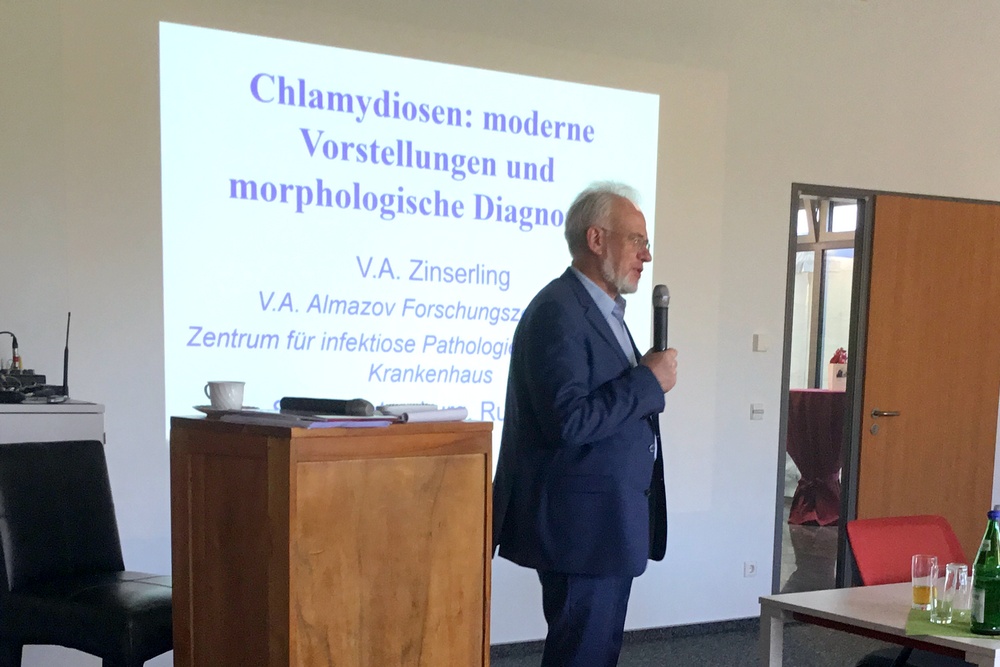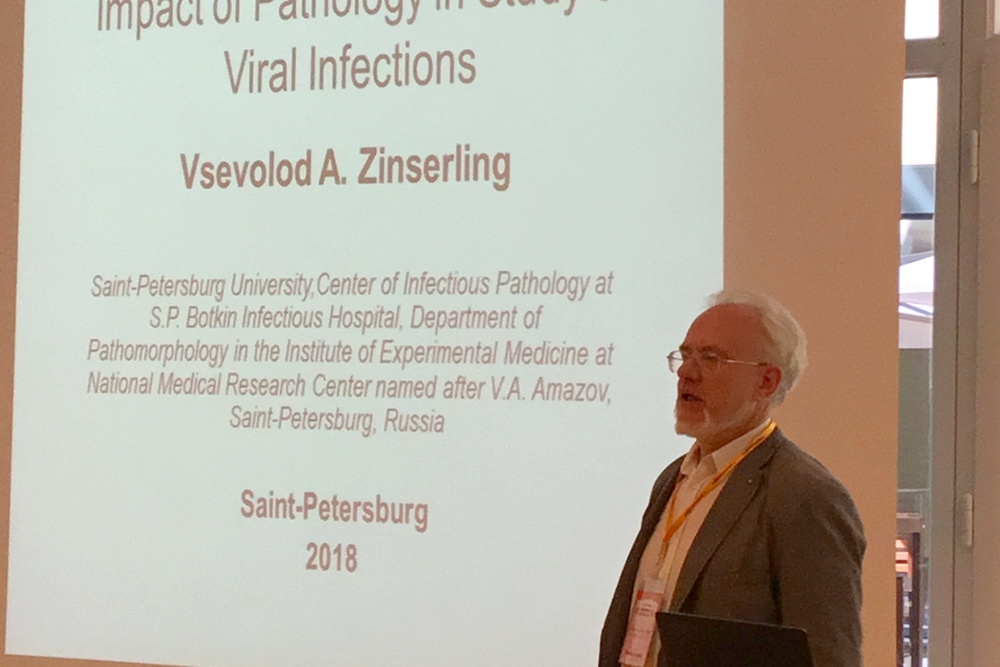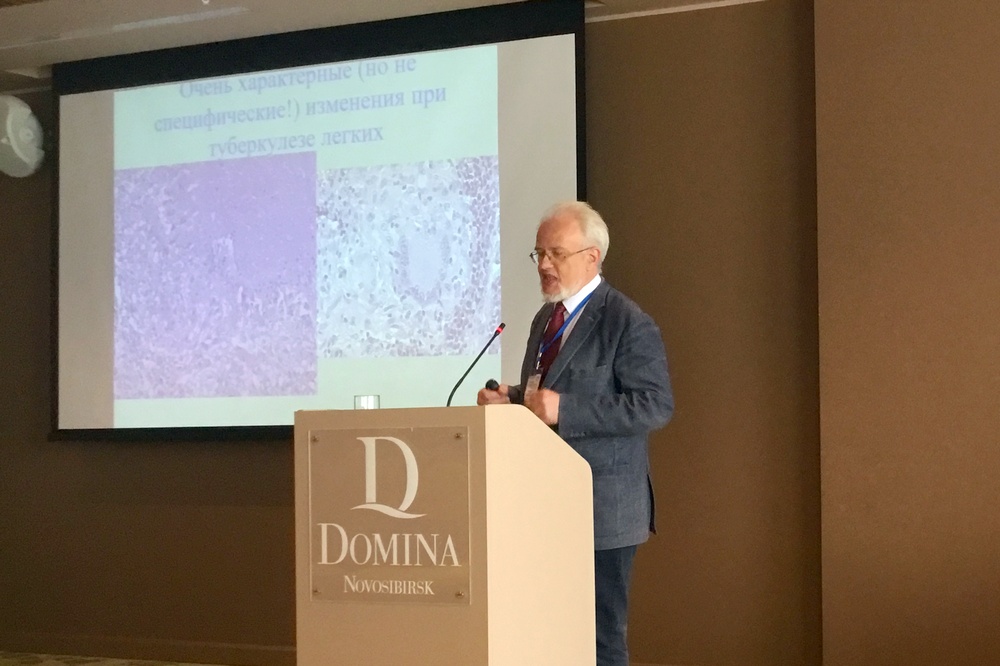Research Department of Pathology



 Prof. Vsevolod Zinserling, MD, DSc
Prof. Vsevolod Zinserling, MD, DScHead of Department
The Preclinical Translational Research Centre of the Institute of Experimental Medicine comprises the Research Department of Pathology.
Participation in State Assignments
2018 «Development and preclinical testing of fluorescence imaging technologies in pathological surgery processes»
2019–2020 «The role of metalloproteinases in the tumor process pathogenesis and activation of the hemostasis system during tumor growth»
Grants
2019–2020 «Strategies for myocardial protection from ischemia/reperfusion injury based on controlled changes in gut microbiota» (Yu. Borshchev, grant of the Russian Science Foundation). Morphological part of the project: specimen preparation, morphometric analysis.
Contributors to the grants of the Russian Foundation for Basic Research, histological and immunohistochemical studies:
2018–2019 «Depression of the Wnt signaling pathway in kidneys and bones as the basic mechanism of pathogenesis in inorganic phosphate metabolism disorders», 18-015-00425 A.
2018–2019 «Molecular mechanisms of myocardial remodeling associated with Klotho protein deficiency», 18-315-00342 mol_a.
Major research tasks
- Morphological analysis for the experimental work done at the Preclinical Translational Research Centre
- Studying the pathogenesis of diseases caused by biological pathogens on experimental and clinical material
- Studying the neurogenesis on clinical and experimental material
- Studying the pathogenesis of diseases of the heart, kidneys and bone marrow on experimental and clinical material
Promising areas for development
- Morphological characteristics of neuroplasticity in various conditions by correlating the treatment performed against neuroimaging data
- Further development of prognostic and predictive markers in neurooncology
- Clarifying the data on morphological changes in the brain associated with HIV infection (distribution of replicative and integrative forms, the possibility of damage from chlamydia, mycoplasma, hepatitis C virus).
- Studying the pathogenesis of infectious diseases, including influenza A H1N1 virus, new coronavirus infection COVID-19.
Advances in neuropathology
- For the first time in the world literature, the specialists proved the ability of mycoplasmas to cause brain damage on the basis of autopsy and experimental material and presented their morphological characteristics.
- For the first time in the world practice, the specialists proved the existence of chronic isolated brain lesions caused by respiratory viruses (influenza A and B, parainfluenza virus type 3) using the clinical and experimental material.
- On autopsy material from ischemic strokes with a high incidence (in all 6 deaths within the first 3 days) using in situ hybridization (dot and in paraffin sections), as well as with IF microscopy, herpes simplex virus was visualized. As the duration of the disease increased, the frequency of positive findings decreased.
- By comparing the results of histological, serological and virological studies, the specialists proved the ability of herpes simplex viruses to cause chronic encephalitis in children, clinically manifesting as organic lesions of the central nervous system.
- The materials of many years’ research in the field of CNS infection in fetuses, children, adults and 10 series of experiments (more than 35 original articles in national and foreign peer-reviewed journals) have been summarized in the morpho-clinical guidelines by V. Zinserling and M. Chukhlovina, Infectious Lesions of the Nervous System, 2nd edition, St. Petersburg, 2011.
Advances in anatomic pathology and pathogenesis of respiratory infections and pneumonia
- All bacterial, mycoplasma, mycotic and viral respiratory disorders in the most severe course have both clinical and morphological specific features.
- Extrapulmonary lesions are very significant in influenza and other viral respiratory infections.
Identified causes of death attributable to influenza:
- Severe generalized viral infection, usually with brain damage
- Local complications – bacterial pneumonia, including necrotizing «destructive» pneumonia
- Aggravation of other diseases, primarily coronary artery disease
- Adult respiratory distress syndrome (ARDS)
International collaboration
Cooperation agreement on new coronavirus infection has been reached with the University of Dresden.
Stepanova M., Averianov I., Gofman I., Korzhikov-Vlakh V., Karttunen M., Korzhikova-Vlakh E., Serdobintsev M., Vinogradova T., Blum N., Semenova N., Nashchekina Y. PGlu-Modified Nanocrystalline Cellulose Improves Mechanical Properties, Biocompatibility, and Mineralization of Polyester-Based Composites. Materials. 2019;12 (20):3435. doi: 10.3390/ma12203435. – Access link: https://www.mdpi.com/1996—1944/12/20/3435.
Vainshenker Y., Korotkov A., Medvedev S., Zinserling V. Noncanonical adult human neurogenesis and axonal growth as possible structural basis of recovery from traumatic vegetative state. Clinical Medicine Insights: Case Reports. 2017;10:1-10. – Access link: https://journals.sagepub.com/doi/10.1177/1179547617732040.
